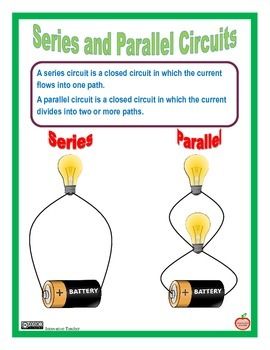Current Parallel Circuit Examples

Notice that in some nodes like between r 1 and r 2 the current is the same going in as at is coming out at other nodes specifically the three way junction between r 2 r 3 and r 4 the main blue current splits into two different ones.
Current parallel circuit examples. That s the key difference between series and parallel. The amount of current in a series circuit is the same through any component in the circuit. So let s go ahead and do that. Let s take a look at some examples of series circuits that demonstrate these principles.
The current in the circuit and the voltage everything will remain the same. So a parallel resistor circuit having n resistive networks will have n different current paths while maintaining a common voltage across itself. An open circuit in one branch of a series parallel circuit usually alters the current levels in several branches of the circuit. Two components are in series if they share a common node and if the same.
Solving parallel circuits is an easy process once you know the basic formulas and principles. Parallel resistors can also be interchanged with each other without changing the total resistance or the total circuit current. The first principle to understand about series circuits is as follows. The sum of the current in each individual branch is equal to the current outside the branches.
After reading these steps you should be able to find the voltage current. The two simplest of these are called series and parallel and occur frequently. In a parallel circuit each device is connected in a manner such that a single charge passing through the circuit will only pass through one of the resistors. When two or more resistors are connected side by side the current can choose it s path in much the same way as cars tend to change lanes and drive alongside one another when a one lane road splits into two parallel lanes.
Individual resistances diminish to equal a smaller total resistance rather than add to make the total. So what we ll do is i ll keep the rest of the circuit as it is. In the case of an open circuit at one end of the parallel resistors as shown in figure 7 i 2 goes to zero. The voltage drop is the same across each parallel branch.
The equivalent or overall resistance of the collection of resistors is given by the equation 1 r eq 1 r 1 1 r 2 1 r 3. Components of an electrical circuit or electronic circuit can be connected in series parallel or series parallel. We ll start with a series circuit consisting of three resistors and a single battery. The total circuit current is equal to the sum of the individual branch currents.
So let s draw the rest of the circuit as it is but replace this combination with a single resistor of eight ohms. Resistors in parallel example no3. Components connected in series are connected along a single conductive path so the same current flows through all of the components but voltage is dropped lost across each of the resistances.


















